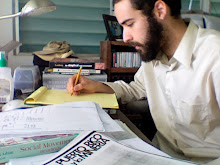One of my first Instagram posts
The popularity of Instagram and other quick photo-sharing apps has finally done something that was never before achieved at such a scale by cheap disposable cameras, the original Holgas, or instant Polaroids: True popular photography. Yes, people's photography!
Alright... when you look through Instagram feeds you often see some pretty boring pictures. Pictures of food, pets, selfies, sidewalks, walls, fans, bottles... It can be pretty exhausting looking through these, especially if your feed is filled with pictures of One-Direction from your little cousin's profile--who has an obsession with them. However, the ever-present nature of phone cameras and the like has also given some interesting results. People who before had absolutely no interest in photography can now easily subscribe to a good photographer's feed...and... emulate them! Even more so impressive, people who before knew nothing about taking pictures, fall in love with seeing the world throu a different lens and teach themselves to take amazing photos! It is now easier than ever for non-photographers to embrace photography and become photographers themselves. And I mean, good photographers...
But this post isn't about them. This post is about the devices themselves. I just wanted to show you some pictures taken with my iPad (a pretty low-resolution camera) that I find are just as interesting as their analog counterparts. The pictures displayed here were taken using the following photography apps: the native photo app, 360 Panorama, and Snapseed.
A moving Swan taken with iPad
 |
| Another picture taken with iPad with no modifications |
 |
| Dual Lens Citizenship (instagram) |
 |
| Fooling the 360 function into a faux multiple exposure |
 |
| Some image modifications made with Snapseed |
 |
| A combination of all programs into one image |















